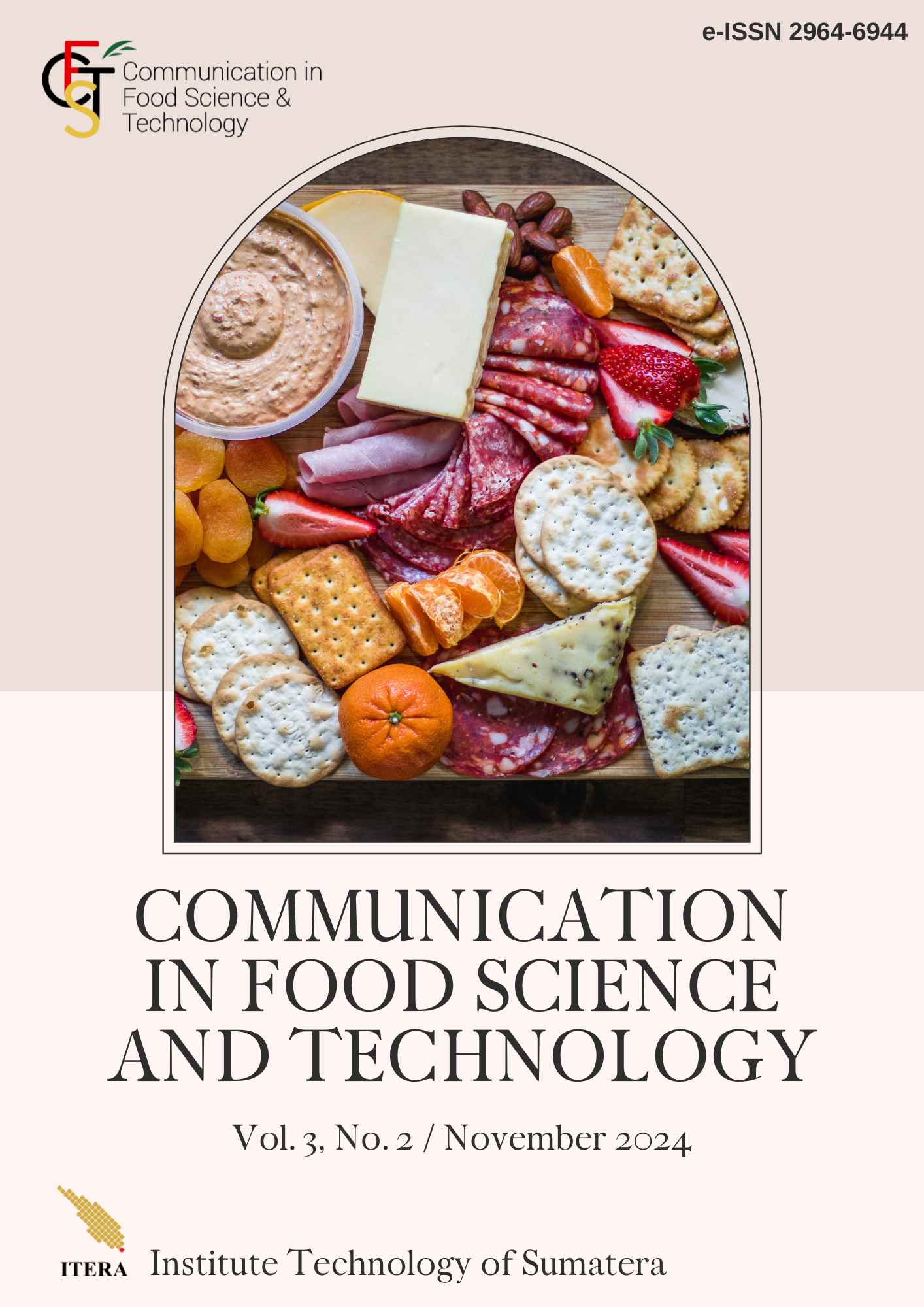Reinforcing Local Food Security through Agrogeological Perspectives: South Lampung, Indonesia
Abstract
Local food security is a critical priority for the coming decades, especially in Indonesia. As the population grows, it is essential to meet local food needs before participating in the national supply. South Lampung, a key region in Sumatra, plays a vital role in the nation’s food supply. However, rapid population growth in this area has raised concerns about the conversion of agricultural land to residential use. To address these challenges, this study raises agrogeology as an alternative approach to reinforcing local food security. By re-evaluating the regional geological characteristics, the study aims to understand the distribution of productive, traditional paddy fields. Field surveys and spatial analyses were conducted for this study. The findings reveal that the silicate-rich lithology in the region’s pyroclastic deposits significantly contributes to maintaining fertile soils, particularly in areas such as Candipuro, Jatiagung, and Palas. Natural drainage systems further support rice cultivation. In alignment with the Sustainable Development Goals, the agrogeological perspective emphasizes the need to mitigate land conversion and improve land-use planning. This approach offers a sustainable pathway to enhance paddy field productivity and ensure water and nutrient availability, thereby supporting long-term local food security.
Downloads
References
[2] W. abbas Zakaria and L. S. Mas Indah, “Risk and behavior analysis rice farmers in Southern Lampung district,” Int. J. Res. Bus. Soc. Sci. (2147- 4478), vol. 8, no. 6, pp. 72–79, Oct. 2019, doi: 10.20525/ijrbs.v8i6.520.
[3] N. L. Rohmah, R. F. Achmad, U. Kafafa, H. P. Ramdhani, R. F. Putri, and H. Yang, “Analysis of Population Pressure and Environmental Carrying Capacity on Agricultural Land in Lampung Province,” in 2nd International Conference on Smart and Innovative Agriculture (ICoSIA 2021), 2022, pp. 40–45.
[4] J. Imbernon, “Changes in agricultural practice and landscape over a 60-year period in North Lampung, Sumatra,” Agric. Ecosyst. Environ., vol. 76, no. 1, pp. 61–66, Oct. 1999, doi: 10.1016/S0167-8809(99)00060-2.
[5] A. E. Hartemink, “Building an International Soil Science,” in Soil Science Americana, Cham: Springer International Publishing, 2021, pp. 359–383.
[6] C. G. Ramos, X. Querol, M. L. S. Oliveira, K. Pires, R. M. Kautzmann, and L. F. S. Oliveira, “A preliminary evaluation of volcanic rock powder for application in agriculture as soil a remineralizer,” Sci. Total Environ., vol. 512–513, pp. 371–380, Apr. 2015, doi: 10.1016/j.scitotenv.2014.12.070.
[7] G. Kritikakis et al., “Estimating Soil Clay Content Using an Agrogeophysical and Agrogeological Approach: A Case Study in Chania Plain, Greece,” Water, vol. 14, no. 17, p. 2625, Aug. 2022, doi: 10.3390/w14172625.
[8] P. van Straaten, “Distribution of agromineral resources in space and time – a global geological perspective,” Pesqui. Agropecuária Bras., vol. 57, 2022, doi: 10.1590/s1678-3921.pab2022.v57.01453.
[9] I. S. Stewart and J. C. Gill, “Social geology — integrating sustainability concepts into Earth sciences,” Proc. Geol. Assoc., vol. 128, no. 2, pp. 165–172, Apr. 2017, doi: 10.1016/j.pgeola.2017.01.002.
[10] J. C. Gill, “Geology and the Sustainable Development Goals,” Episodes, vol. 40, no. 1, pp. 70–76, Mar. 2017, doi: 10.18814/epiiugs/2017/v40i1/017010.
[11] S. Mangga, S.A., Amirudin, T., Suwarti, S. and Gafoer, Peta Geologi Lembar Tanjungkarang, Sumatera 1: 250,000. Pusat Penelitian dan Pengembangan Geologi, Departemen Pertambangan dan Energi., 1993.
[12] H. C. Natalia, D. G. Harbowo, and R. Ikhram, “Potensi Geodiversity di Sekitar Kawasan Anak Krakatau-Way Kambas, Provinsi Lampung, Sebagai Kandidat Geopark Indonesia,” J. Sci. Appl. Technol., vol. 5, no. 1, pp. 47–57, 2021.
[13] N. Haerudin, Wahyudi, D. Risdianto, and W. Suryanto, “Application of Radon Isotopes to Determine Permeable Zones in Rajabasa Geothermal Field, Indonesia,” Appl. Mech. Mater., vol. 771, pp. 165–169, Jul. 2015, doi: 10.4028/www.scientific.net/AMM.771.165.
[14] N. A. E. Kusumastuty, T. K. Manik, and P. B. Timotiwu, “Identification of temperature and rainfall pattern in Bandar Lampung and the 2020-2049 projection,” IOP Conf. Ser. Earth Environ. Sci., vol. 739, no. 1, p. 012045, Apr. 2021, doi: 10.1088/1755-1315/739/1/012045.
[15] R. Hevrizen and Meidaliyantisyah, “Climate, land area and fertilizer distribution policy supports to Lampung strategic food production,” IOP Conf. Ser. Earth Environ. Sci., vol. 807, no. 4, p. 042078, Jul. 2021, doi: 10.1088/1755-1315/807/4/042078.
[16] N. Anika, L. Wijaya, D. A. Ramadhani, and A. I. Fauzi, “Assessment of Water Availability for Rice Cultivation in South Lampung Regency,” IOP Conf. Ser. Earth Environ. Sci., vol. 1038, no. 1, p. 012037, Jun. 2022, doi: 10.1088/1755-1315/1038/1/012037.
[17] D. G. Harbowo, “An assessment of the scientific value of Krakatoa, Indonesia from a geoheritage perspective,” J. Appl. Geosci. Eng., vol. 2, no. 1, pp. 11–25, 2023.
[18] T. Muliawati and D. G. Harbowo, “A Statistical review of the dates and patterns of volcanic activity of Lewotolo Volcano, East Nusa Tenggara, Indonesia,” IOP Conf. Ser. Earth Environ. Sci., vol. 1245, no. 1, p. 012006, Sep. 2023, doi: 10.1088/1755-1315/1245/1/012006.
[19] H. C. Natalia, D. G. Harbowo, and R. Ikhram, “Potensi Geodiversity di Sekitar Kawasan Anak Krakatau-Way Kambas, Provinsi Lampung, Sebagai Kandidat Geopark Indonesia,” J. Sci. Appl. Technol., vol. 5, no. 1, p. 47, Mar. 2021, doi: 10.35472/jsat.v5i1.318.
[20] H. Etesami and J. Schaller, “Improving phosphorus availability to rice through silicon management in paddy soils: A review of the role of silicate-solubilizing bacteria,” Rhizosphere, vol. 27, p. 100749, Sep. 2023, doi: 10.1016/j.rhisph.2023.100749.
[21] M. Sahebi et al., “Importance of Silicon and Mechanisms of Biosilica Formation in Plants,” Biomed Res. Int., vol. 2015, pp. 1–16, 2015, doi: 10.1155/2015/396010.
Copyright (c) 2025 Danni Gathot Harbowo

This work is licensed under a Creative Commons Attribution-NonCommercial 4.0 International License.












